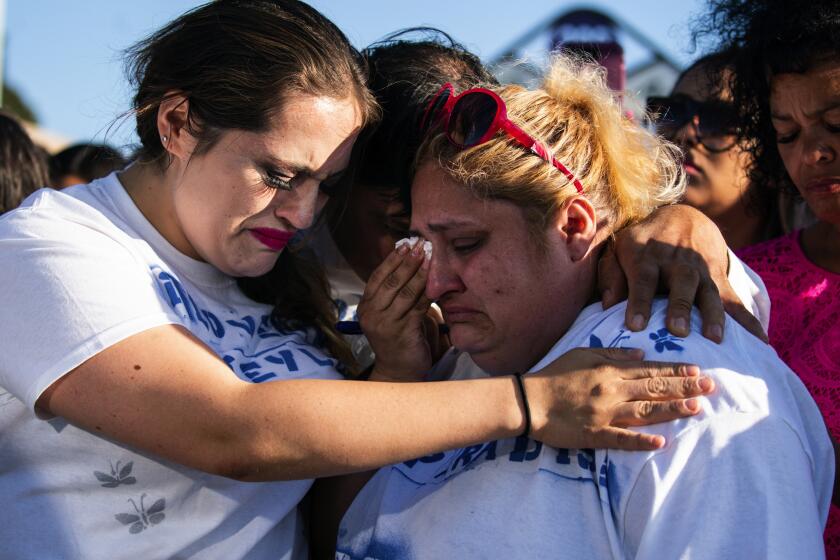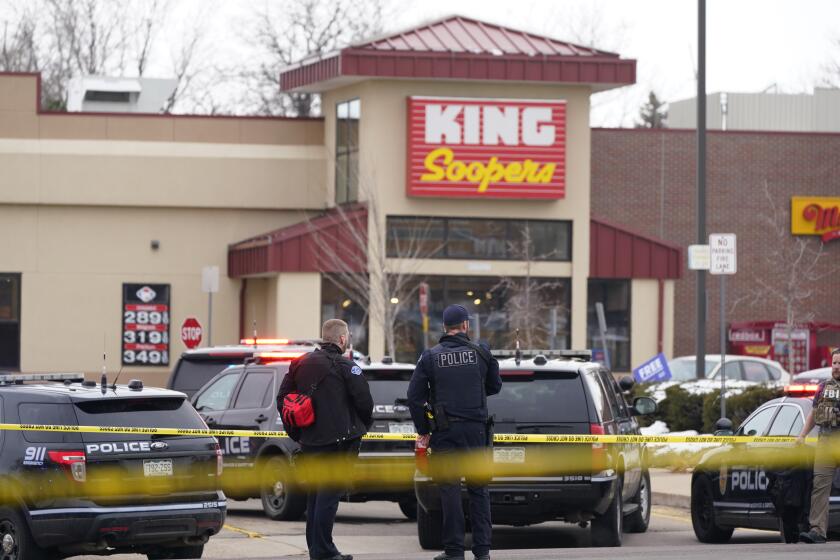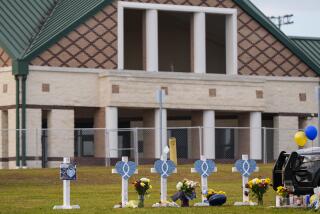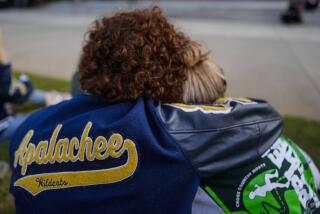Opinion: Here’s what is so unusual about the Wisconsin school shooting — and what isn’t

- Share via
The Dec. 16 shooting at Abundant Life Christian School in Madison, Wis., has shocked the nation, not only for its horror but for its unique profile. This time, a teenage girl opened fire inside her school, killing a teacher, another student, and apparently herself, and injuring six others. Although female school shooters are exceedingly rare, the patterns that lead to such tragedies are painfully familiar.
School shootings are a uniquely American crisis. According to the K-12 School Shooting Database, which tracks whenever a gun is brandished or fired on school property, there have been 323 such incidents on school property in 2024 alone.
The public’s attention often focuses on the gender of the perpetrators. After the March 2023 mass shooting at the Covenant School in Nashville, the shooter’s transgender identity was much discussed. After other school shootings, “toxic masculinity” has been highlighted, along with the well-documented fact that the majority of mass shootings are perpetrated by men and boys.
A student opened fire at a private Christian school in Wisconsin, killing two people and injuring others, police said. The shooter also died.
In our recently released K-12 school homicide database, which details 349 homicides committed at K-12 schools since 2020, only 12 (3%) of the perpetrators were female. There have been some notable cases involving female school shooters. In 1988, a female babysitter walked into a second-grade classroom in Winnetka, Ill., and told the students she was there to teach them about guns; she opened fire, killing an 8-year-old boy and wounding five other students.
In Rigby, Idaho, in 2021, a 12-year-old girl plotted to kill 20 to 30 classmates. Armed with two handguns, she walked out of a bathroom and began firing in the hallway, wounding two students and the custodian. A teacher heard the shots, left their classroom, and hugged the shooter to disarm her.
Police responding to the shooting Monday at Abundant Life Christian School found shooter Natalie Rupnow, 15, had a self-inflicted gunshot wound.
The earliest case in our records was in 1979, when a 16-year-old girl opened fire at Cleveland Elementary School in San Diego, killing two and injuring nine. This was when the American public was first introduced to a female school shooter. Her infamous explanation for her actions — “I just don’t like Mondays” — is etched in pop culture. But it was less about a flippant attitude and more about despair. At a parole hearing years later, the shooter admitted the truth: “I wanted to die.” She saw her attack as a way to be killed by police.
Her story reflects what we now know: Most school shooters are suicidal, in crisis and driven by a mix of hopelessness and rage.
Decades of research reveal a consistent set of truths. School shooters are typically insiders, meaning they are current or former students. They know the routines, security measures and weaknesses of their schools. And while investigators don’t yet know what led to the Madison shooting, school shootings are almost never spontaneous acts of violence.
Instead, in most cases, school shootings are the culmination of a profound unraveling, a last and terrible cry for help. More than 90% of the perpetrators show clear signs of a crisis in the months or weeks leading up to their attacks — depression, mood swings, agitation, isolation or an inability to manage daily life. And crucially, more than 90% leak their plans ahead of time, sharing warnings with peers, posting ominous messages, or even voicing their intent outright.
Perpetrators of mass shootings have a lot in common. Understanding that could help prevent future violence.
With each school shooting, we tend to concentrate on details: the rare female shooter, the high-profile massacre, the immediate response of authorities. But if we step back, we tend to see the same story repeated again and again. A student insider. In crisis. Suicidal.
Finally, there is access to guns — the bridge between crisis and catastrophe. As of Tuesday afternoon, we don’t know where the Madison shooter got the gun she used. In Wisconsin, it is illegal for someone under the age of 18 to possess a firearm, although there are exceptions.
In nearly every school shooting, the weapon is obtained from the shooter’s home or from a complicit adult. This was true in 1979 when the Cleveland Elementary shooter used a rifle given to her by her father as a Christmas gift, and it remains true in the data today. When firearms are stored securely — locked, unloaded and separate from ammunition — the risk of impulsive violence drops dramatically. Yet this basic precaution is far too often ignored.
Parents and guardians must understand their role in preventing tragedy. Safe gun storage is the simplest, most effective way to ensure that guns do not fall into the hands of teens in crisis. Many states have implemented laws holding adults accountable when their firearms are accessed by minors. For the purposes of that law in Wisconsin, a child is defined as someone 14 or younger. The shooter was 15.
Many of the settings where mass shootings occur — workplaces, schools, churches, shopping centers — either shut down or sharply reduced capacity in 2020.
At the same time that families must be vigilant, schools must foster environments where students feel safe reporting troubling behavior without fear of punishment or stigma. This year alone, several teenage girls have made threats of violence against their schools, sometimes coming alarmingly close to taking real action. On Sept. 7, a 15-year-old girl in Temperance, Mich., was arrested after sending a group text threatening a school shooting at Whiteford Agricultural Schools. Two weeks earlier, on Aug. 26 in Austin, Texas, a tip to the FBI led to the arrest of a 17-year-old girl, disgruntled and openly plotting a shooting at her former elementary school. In March, an 18-year-old woman was taken into custody after threatening to “shoot up” a school in Knoxville, Tenn.
Yet if we simply criminalize threats without intervening meaningfully, we risk amplifying the very grievances that lead to violence. We must address the broader culture of despair and anger that typically fuels these attacks. Social isolation, bullying and untreated mental health issues are not trivial adolescent struggles — they may be precursors to violence for those who see no other way out.
School shootings should not be remembered for the novelty of any of their details, but as reminders of what we already know and what we can prevent. We cannot erase the trauma that these events cause, but we can act on the lessons they offer. The warning signs are usually visible. The tools for prevention exist. And every school shooting we fail to stop is a tragedy we could have prevented.
James Densley is a professor at Metropolitan State University and co-founder of the Violence Prevention Project Research Center at Hamline University. Jillian Peterson is a professor at Hamline University and co-founder of the Violence Prevention Project Research Center. David Riedman is a professor at Idaho State University and creator of the K-12 School Shooting Database.
More to Read
A cure for the common opinion
Get thought-provoking perspectives with our weekly newsletter.
You may occasionally receive promotional content from the Los Angeles Times.














